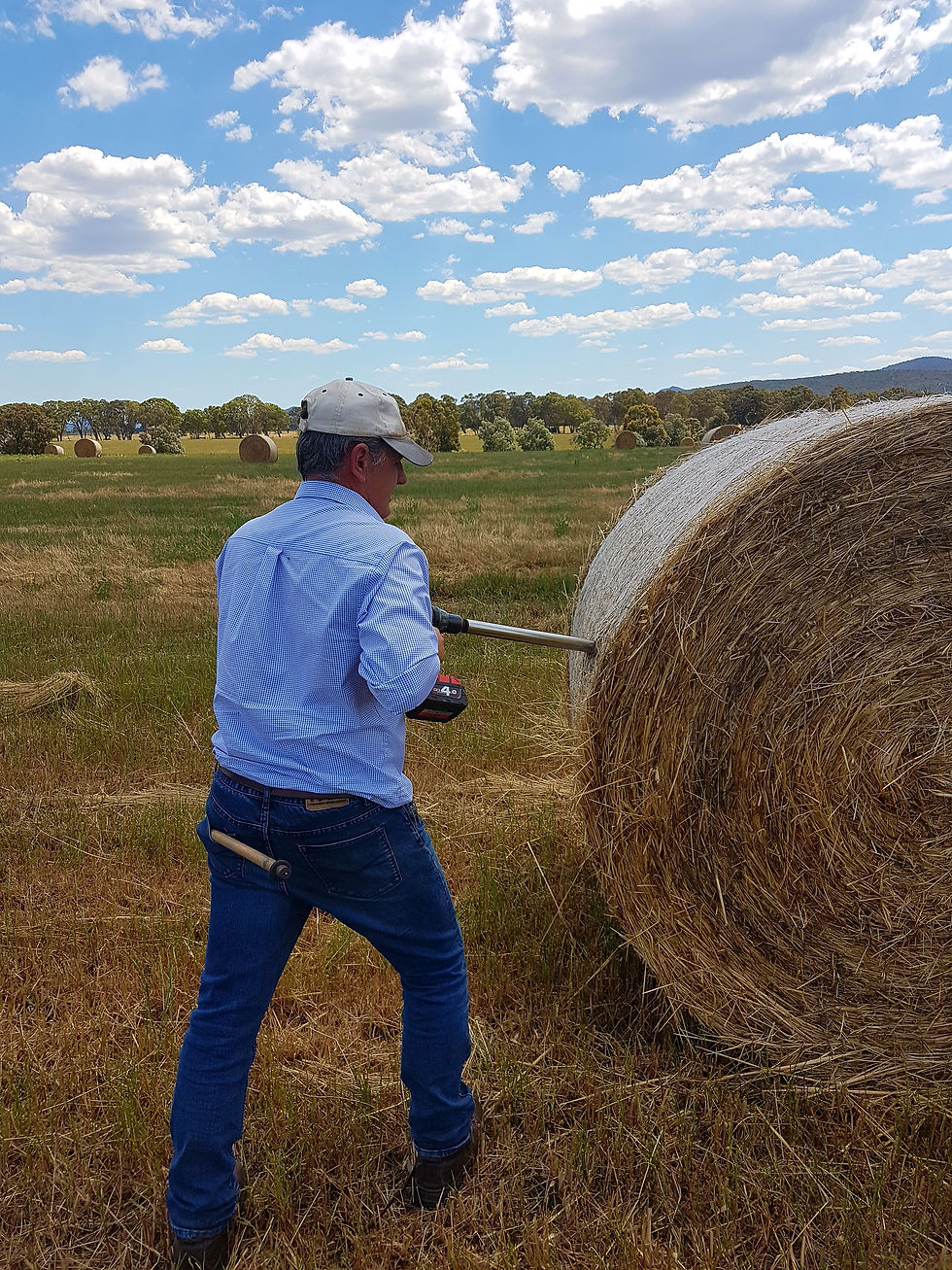NDFd - Neutral Detergent Fibre Digestibility
- Rebecca Thorn

- Apr 14, 2022
- 4 min read
By Mikaela Baker, (B. Ag Sci), TRAC Ruminant Productivity Consultant
Neutral detergent fibre digestibility (NDFd) has become a central conversation point among nutritionists and their clients this year, due to implications in achieving milk production targets and sourcing quality forages. Examples we have seen where this has had a production and financial impact have been from two feed analyses of silage from different years, with similar dry matter, NDF, energy and protein, but they did not yield the same production results, and this was solely due to the digestibility of the forage.
When clients ask how we can decrease grain use or how to improve production, the first response is usually to improve forage quality of home-grown fodder and being very critical with the quality of purchased feed. We have the power of choice when purchasing feeds to compliment what is grown at home and therefore critical evaluation using quality feed analyses allows for strategic decision making.
The tables below show the seasonal averages for the 2020 harvest and 2021 harvest for cereal hay and pasture hay, here we can see that forages this year have shown lower digestibility and overall lower quality.
2020/21 vs 2021/22 harvest of Cereal Hay

2020/21 vs 2021/22 harvest of Pasture Hay

When looking at a feed analysis, we always check energy, protein and NDF which provides an overview of the feed suitability. To check the true quality, the amount of NDF that breaks down within a timeframe (24hr, 30hr, 48hr or the indigestible fractions up to uNDF 240hr) will have an impact on energy yield from that feed. When we take an NIR analysis, the sample shows the total available nutrients e.g. CP, ME, NDF, whereas the NDF digestibility shows the availability of those nutrients to the ruminant.
The rate that fibre is broken down within the rumen is correlated to dry matter intake (DMI), the better the break down, the more food we can fit, therefore more energy into the animal to yield higher milk production outputs. While looking at NDF and lignin is still important and the first point of measure, NDFd is the next step to selecting feeds to get more out of our rations.
With many time points to look at both digestible fibre and undigestible fibre it can be confusing as to which one will be the best number to consistently compare forages. The timepoint used for interpretation will depend on the animal and type of feeding system. For lower production animals NDFd 30hr and 48hr show the best representative of feed quality for those animals. For high production cows and cows fed TMR, NDFd 24hr and 30hr are more suited, due to high DMI intake.
Undigestible NDF (uNDF) measured at 240 hours can be useful in identifying what fraction of the feed simply will not break down, and the impact this will have on the rate of passage. For example, in pasture based robotic systems we are chasing very low uNDF 240hr and very high digestibility in 30hr to have forage move through the rumen quickly, so the animal moves onto the next paddock allocation via the robots. Where we have forage that has a very slow breakdown, the rumen dwell time of that feed will decrease DMI and motivation; based on what we have seen in the field. A rule of thumb is that for every 1 unit of NDFd difference in feed quality, it is worth 0.25 L of milk.
The scale of digestibility between forages varies quite a bit as seen in Figure 1 below. Grass silage is one of our most abundant silages made in Southern Australia, which also shows the greatest range indigestibility, although often the local pasture silages tend to sit on the lower end of the scale. In this scale, the higher the digestibility, the better the outcome.
In the Mike Hutjens’ graph it shows the level of complete indigestibility of different forages, where we look for the opposite numbers compared to Figure 1 and the lower the number, the better the outcome. In Hutjens graph we see feed such as corn silage has the lowest indigestibility, followed by cereal silage.

There is the opportunity to get NDF digestibility and timeframe breakdown on the Forage Lab Australia A1 Plus report. The ability to capture and present this information through the Near Infra-Red (NIR) analyses comes from a large database of wet chemistry that has been collected over thousands of samples.
There are two methods to record NDFd:
In the rumen of a canulated cow, called ‘in situ’ where the NDF is measured at a particular timepoint, before and after rumination, this difference show us how much of the feed was digested. This method is mostly only used for research due to sample numbers to create a true representative database for NIR calibrations.
The second method, which is most used, is ‘in vitro’ analysis where a sample is placed into a glass beaker with rumen fluid where the sample is ‘digested’ in a replica rumen environment using the Goering and Van Soest method.
Another measure of quality often queried, is the Dry Matter Digestibility (DMD). We don’t often use this number, as the common number given is provided through a calculation from NIR results of acid detergent fibre, while this can be useful for a comparison it does not provide a full explanation of digestibility.
If you would like to discuss your forage samples and go through the impact of digestibility
on your ration, please contact your local TRAC Expert in Ruminant Productivity
or phone the TRAC Office on 08 8733 1888.
Our Consultants
EXPERTS IN RUMINANT PRODUCTIVITY
Tom Thorn
0427 243 319
Owen Rees
0429 437 823
Mikaela Baker
0457 243 319
To download a copy of this article, please click the link below...




Comments